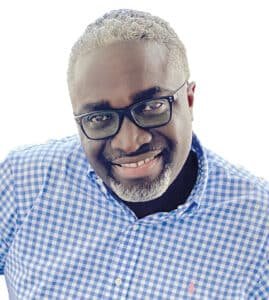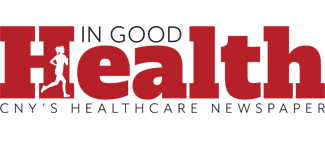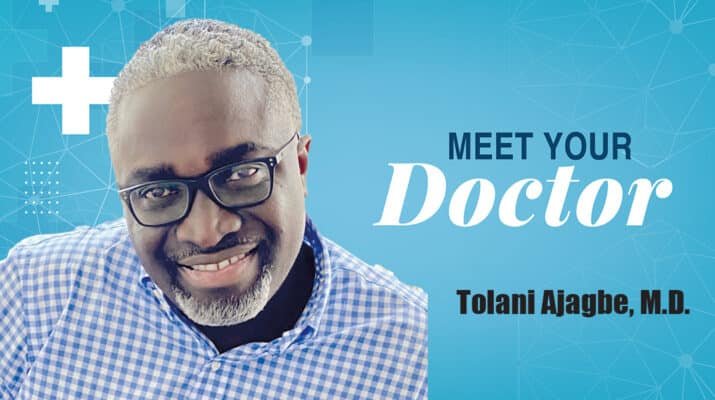Crouse Health’s addiction medicine doctor: Heroin is missing in action; fentanyl is now the predominant opioid of choice in Onondaga County. He explains what’s behind the change
By Chris Motola
 Q: Your specialty is addiction medicine?
Q: Your specialty is addiction medicine?
A: Yes, addiction medicine, psychiatry and I’m also a general psychiatrist. So I still practice in those three realms. I’m board-certified in those three.
Q: As far as addiction goes, what are the big challenges in the Central New York area? Is it still opioids or are there other issues?
A: Yes, opioid is still the major substance we struggle with in Onondaga County, which is still reflective of the national and state trends as well.
Q: Among opioids, what opioids are predominant these days?
A: Pre-COVID[-19], we still had a little bit of heroin in the community, probably 20% of the opiate supply was still heroin, while the majority was fentanyl, but since COVID, [heroin] has disappeared completely. So it’s fentanyl that’s the predominant opioid.
Q: What’s behind that switch? Is fentanyl just more readily available? Cheaper? Stronger?
A: Yes, it’s cheaper to produce, it’s readily available, it’s cheaper to buy, easier to transport, easier to assemble and its potency is much, much stronger than heroin. That increases its addictive and market value for drug dealers. All those things together have made fentanyl the opioid of choice. There’s also less competition from other opioids like heroin. During COVID, the interruption in their supply chain led to them not even being able to bring any heroin to the country and also that almost completely shut off the heroin supply. So what we’ve seen since COVID is there are a lot of synthetics on the street because heroin is missing in action. So the first thing we saw was that patients would come to us and say they’re using heroin, but when we do a drug screening we find methamphetamine, cocaine, benzodiazepine and fentanyl, but no heroin. And that’s a trend we’ve seen since COVID. They think they’re buying heroin, but it’s actually a synthetic.
Q: Is that how most of your patients are being exposed to fentanyl? Are they seeking it out or is it ending up in other drugs they believe they’re doing?
A: Well, there’s a historic perspective to that. We still know that for most patients who become addicted to opioids — probably a good 70% of them — were legitimately prescribed opioids for therapeutic purposes. People get injured, people have surgeries, people have a traumatic motor vehicle accident or some other legitimate reason. A part of the risk of developing an addiction to opiates may also been genetic, so when I as a doctor prescribe an opiate for pain then some patients have difficulties stopping that medication. And then because of the duration of time or much opiate they are prescribed can put them at the additional risk. Many make the transition to illicit opiate because they are cut off. Maybe a doctor decides that, for this kind of pain or injury, you shouldn’t still be on opioids. Sometimes it could be that they had a drug screening and they tested positive for an opioid that they’re not being prescribed. So for multiple reasons, they get caught up. So when they get caught up, they end up on the street. Initially, they try to buy the same opioid that they’re prescribing. Financially, they cannot afford it. And they make the transition to heroin or fentanyl. So that’s the trend we’re seeing. So, we already created a lot of opioid addicted individuals even prior to COVID, right? All that’s going on now is just we’re trying to not get sick. So whatever opioids are available on the streets, it’s what they’re going to go for. In the fentanyl era, because of the potency of fentanyl and the addictive potential, it’s difficult to go back, to taper off.
Q: At this point we’ve been aware of the prescription-driven addiction vector for quite some time. Are we still seeing a lot of new medical industry-driven opioid addictions? Or is that more like a legacy from five-plus years?
A: It was much higher and I think there’s been governmental and regulatory agency intervention to mitigate that, but the pharmaceutical industry is profit-driven so they are still going to get creative in ensuring that opioids are still being prescribed. And don’t get me wrong, opioids are still needed in pain control. I personally believe pain should be aggressively treated. But under-treatment and over-treatment of pain are dangerous for people who have addictive potential or risks. It’s not like it used to be like in the ‘90s and early 2000s. There are regulatory processes in place to mitigate the most abusive prescriptive practices.
Q: What other sources of addiction do you see for opioids?
A: An additional factor is drug adulturation. Let’s say I am addicted to stimulants, I use cocaine or I use marijuana or I use benzodiazepines. So, drug dealers are now adulterating almost every drug with fentanyl. So even though you don’t seek out opioids, you’re already exposed in such a way that, or for such a long time that you’re now developing new addiction to opioids. So there’s just so many avenues for this problem to persist. And then you still have those prescriptions being handed out, handed out by providers for pain control. And sometimes it could take months. Some people have been on it for years. So there’s just so many ways in which to come to the opioid addiction pool. Even though the things are getting better, don’t get me wrong, it’s a lot of work.
Q: On your end, what tactics and strategies do you use to help people who are on these very addictive and potentially very dangerous drugs?
A: We take a very holistic approach to addiction, which is both biological and psychological. We provide medications that are targeted toward the two drivers of opioid addiction, which are cravings for opioids and also withdrawal symptoms. So withdrawal symptoms are time-limited, right? But cravings could be for life. So treatments that stop withdrawal symptoms and mitigate cravings will end up being what helps the most patients on the long run with severe forms of addiction. So that would be things like methadone, suboxone, which is generic and also naltrexone, which is an opioid antagonist. So these three medications, two of them actually help with withdrawal symptoms and cravings, the third just with cravings. So a lot of evidence shows that the risk of mortality is drastically reduced for patients who are maintained on medications. We also try to identify the drivers for their addiction, things like stress, boredom, trauma. We actually provide treatment here towards the psychological causes of addiction. We have psychotherapy groups, individual counseling, group counseling and specialized counseling as well. We have social intervention services. We refer patients for social intervention just to help them with some of the drivers of addiction, you know, unemployment, homelessness, isolation. So there are just so many approaches. Then, also, the other thing that we try, is other harm reduction strategies. So all those things I’m talking about have to do with harm reduction. One of the major things that we do since 2017 is try to mitigate overdoses., That involves Narcan distribution, making sure that patients have access to it. We also do fentanyl testing. We test for other drugs, even things like xylazine — xylazine is another non opioid driver for overdose, so we do xylazine tests, strips. We also test for some of the serious medical issues that come from addiction, like hepatitis C virus and HIV. We do a lot of things just to help to mitigate the complications associated with. We have peer-support services as well, where people further into recovery support others in recovery and in navigating the system.
Q: I imagine one of the bottlenecks here is that you’re dealing with a population for whom life is financially unwinding that also needs expensive, intensive services.
A: So even as I speak, only around 10% of people who suffer from addiction are in treatment. That number is slightly higher for opioids because it’s such a deadly addiction. Back in the day the issue was that people had to be on a waiting list sometimes for months, maybe over a year to get in. But in the past five years we’ve been able to actually offer same-day access. Part of the services that we provide are case management and vocational services. They want to go back to work, or they want go back to school or they wanna participate in some volunteer services? We help them. If a patient is homeless, we help them get into Section 8 housing. We don’t want a patient homeless on the street.
Lifelines
Name: Tolani Ajagbe, M.D.
Position: Medical director of addiction services and chairman of the department of psychiatry at Crouse Hospital; chairman of the Division of Addiction Psychiatry at Upstate Medical University Hospital.
Hometown: Idaban, Nigeria
Education: University of Idaban; SUNY Upstate Medical University
Affiliations: Crouse Hospital; SUNY Upstate Medical University Hospital
Organizations: American Academy of Addiction Medicine; American Academy of Addiction Psychiatry; American Psychiatry Association
Family: Wife, three children
Hobbies: Billiards, basketball

